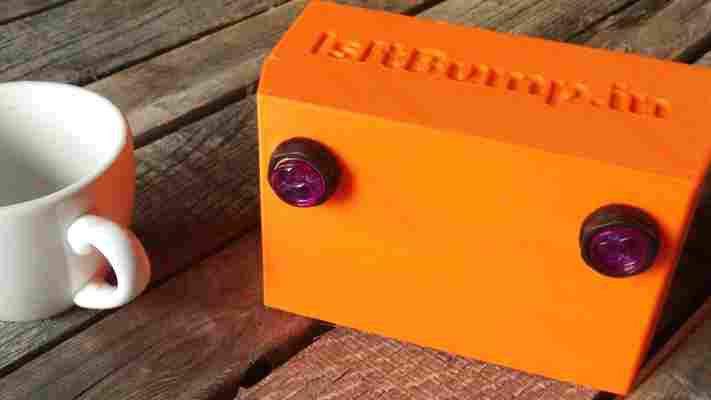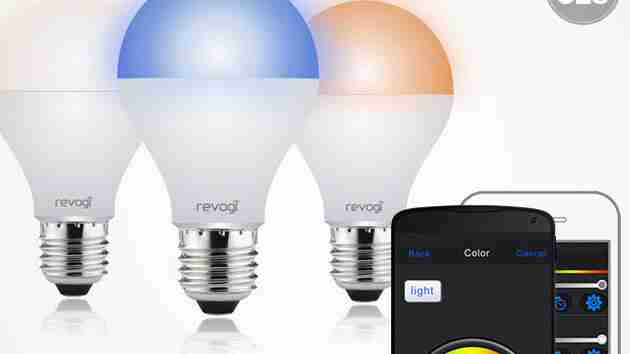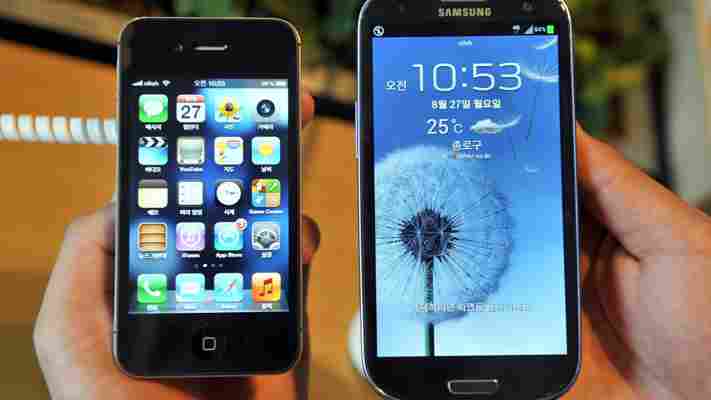While a lot of the early Internet of Things chatter brought us things like internet-connected lightbulbs, plugs and many other household items, Isitbump.in wants to use a network of little connected boxes to save you time in your local shops.

Pittsburgh-based engineer Matthew Pegula came up for the idea of Isitbump.in after being stuck in a queue at his local grocery store one too many times, which left him wondering if there was a way to show how busy the shop was before he left the house.
The result is a small box with sensors to measure how busy a particular location is; the Bumpbox then feeds this data back to the Isitbump.in Web platform where users can see how busy a shop, bar or any other location is via the sensors.
There’s only one location live right now – a coffee shop in Pittsburgh – but Pegula says that the team is now “cranking these things out and looking to get a ton of them out there”.
No one likes queuing, or arranging to meet friends at a specific bar only to find it’s completely dead, so we’re pleased to see a simple Internet of Things idea that can actually save us some time and make life more efficient. Nonetheless, there could be resistance from retailers. We suspect that customers queueing out the door is a preferable situation to no one coming in as it seems too busy. Of course, for bars, looking busy would likely be a bonus; we’ll be interested to see what uptake is like for this idea.
➤ Isitbump.in
30% off Revogi Smart Color Bluetooth LED Bulb
Experience the future in your own home today, starting with smart light bulbs. Shown off at this year’s CES, Revogi Smart Color Bluetooth LED Bulbs can change color, dim and brighten on command, and use just 10 percent of the energy consumed by a standard bulb.

Revogi’s smart LED bulbs are easy to install — simply swap your old bulbs and twist them into place, just like a regular bulb. You can then control them from around the house with your smartphone! It’s compatible with iOS and Android.
Use the companion app to cycle through 16 million colors, set mood lighting to calm or energize you, dim or brighten the lights in any room without the need for special switches, and set timers to turn lights on or off to help you fall asleep and wake up.
Light up your home like never before, with our special offer at TNW Deals : get 30 percent off when you order Revogi bulbs, at just $34.99 each! Order now and get free shipping across the US.
➤ Get this deal
comScore: Apple takes 41.3% share as top US smartphone maker, Samsung hits 27%; Android outgains iOS
Apple’s dominance as the top smartphone OEM in the US seems to have peaked at just above 41 percent. Samsung is taking advantage by gaining share faster than its main competitor, and hitting a new high at 27 percent. Rounding out the top five were LG, Motorola, and HTC.

In the platform wars, Google remains at the top with Android, and Apple has taken second with iOS. While Google’s mobile platform has slipped multiple times last year, and started off losing share at the start of 2014, it has managed to outgain Apple’s platform. Rounding out the top five were Microsoft, BlackBerry, and Symbian.
The latest data comes from comScore , which regularly surveys over 30,000 mobile subscribers in the US. The market research firm says 163.2 million Americans owned smartphones (68.2 percent mobile market penetration) in February, up 7 percent since November.
During the quarter, here is how the top five smartphone OEMs fared:
As you can see, Apple gained 0.1 percentage points in smartphone subscribers (from 41.2 percent to 41.3 percent) while Samsung grabbed 1.0 percentage points (from 26.0 percent to 27.0 percent). LG gained 0.3 points (to 6.8 percent), Motorola slipped 0.4 points (to 6.3 percent), and HTC dropped 1.0 points (to 5.4 percent). As of late, this trio has been swapping places on the regulars as each tries to gain a foothold for third place.
Samsung outgained Apple in more months than not during 2013, and in 2014, the South Korean company has beat the American one in both months so far. With the Galaxy S5 on the way, it’s likely the iPhone 5s and iPhone 5c won’t be able to hold it back; that will be a job for the iPhone 6 to try.
HTC’s woes continue, and all eyes are now on the M8 smartphone. Motorola still doesn’t seem to have much of a strategy aside from regular discounts . LG has managed to recover, more or less, though we don’t have sales numbers for the Nexus 5 .
On the software side, Google continues to dominate everyone else. That being said, Android lost share most months in 2013, and saw a drop in the first month in 2014, with a small recovery in the second:
Google’s mobile operating system gained 0.2 points (from 51.9 percent to 52.1 percent). Apple meanwhile increased its share by 0.1 points (from 41.2 percent to 41.3 percent, just like for its smartphone share). Although the difference is minute, we haven’t seen Android outgain iOS for many, many months.
BlackBerry was down 0.6 points (from 3.5 percent to 2.9 percent), Microsoft gained 0.3 points to 3.4 percent, and Symbian stayed at 0.2 percent. Windows Phone is starting to cement its third place position, which it grabbed from BlackBerry OS at the start of 2014. Finally, the Android-iOS duopoly in the US hit a new high: 93.4 percent market share.
Top Image Credit: Jung Yeon-Je /Getty Images
